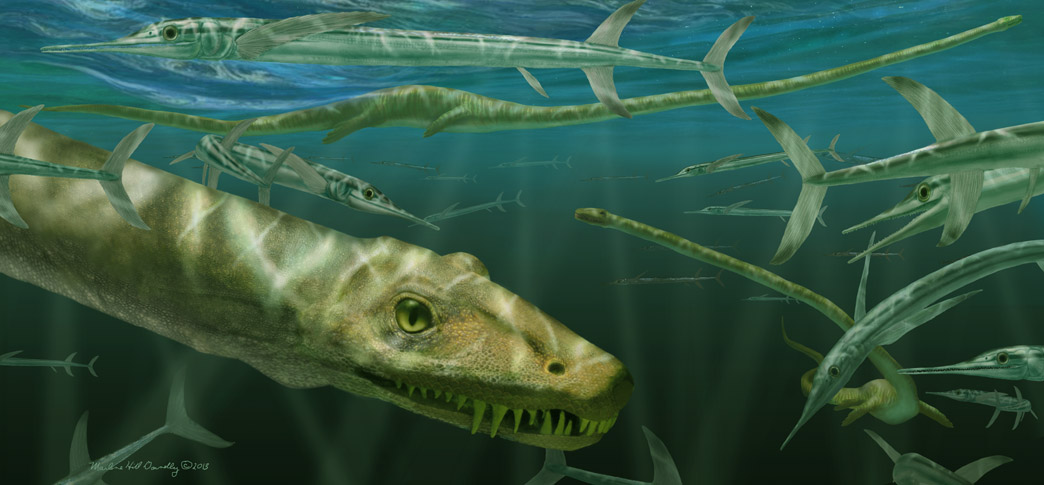The remains of a 240-million-year-old marine reptile with an uncanny resemblance to a mythical Chinese dragon have been pierced together by paleontologists for the first time. Known as Dinocephalosaurus orientalis, the 5-metre (16-foot) long beast was a native of southwestern China during the Triassic period.
While the species was first identified in 2003, its appearance was uncertain due to incomplete remains. Since then, however, more complete remains have allowed scientists to piece together a single specimen, depicting the creature in its full glory for the first time.
The reconstructed specimen is based on seven specimens. These include five newly discovered remains, one of which is fully articulated. They were all discovered in Guizhou Province, a part of south China that’s no stranger to incredible paleontological discoveries.
By patching together the numerous specimens, the team showed that D. orientalis had a significantly longer neck than previously appreciated, endowing the animal with its elegant dragon-like appearance.
“This discovery allows us to see this remarkable long-necked animal in full for the very first time. It is yet one more example of the weird and wonderful world of the Triassic that continues to baffle palaeontologists,” Dr Nick Fraser, Keeper of Natural Sciences at National Museums Scotland, said in a statement.

An artist’s illustration of Dinocephalosaurus orientalis swimming alongside some prehistoric fish known as Saurichthys.
Image credit: © Marlene Donelly
“We are certain that it will capture imaginations across the globe due to its striking appearance, reminiscent of the long and snake-like, mythical Chinese Dragon,” explained Dr Fraser.
The research project was an international effort involving scientists from Scotland, Germany, the US, and China, who studied the fossils for over 10 years at the Institute of Vertebrate Palaeontology and Palaeoanthropology in Beijing.
As shown by its flippered limbs, this prehistoric species was well-adapted to oceanic living. Furthermore, researchers have discovered fish bones within the stomach area of some specimens, providing a clear snapshot of their seafood diet.
Despite their aquatic lifestyles and lanky necks, the researchers explain that the “Chinese dragon” was not closely related to plesiosaurs, which evolved some 40 million years later.
Recent years have seen a gold rush of fossil-finding in China, unearthing some important breakthroughs in the study of paleontology. In one relatively recent discovery, Chinese scientists found a fossilized egg containing the most complete dinosaur embryo ever found, estimated to be about 27 centimeters (10.6 inches) long.
“This remarkable marine reptile is another example of the stunning fossils that continue to be discovered in China”, added Professor Robert Ellam, Editor-in-Chief of Transactions and Fellow of the Royal Society of Edinburgh.
The new study is published in the journal Earth and Environmental Science: Transactions of the Royal Society of Edinburgh.
Source Link: 240-Million-Year-Old Fossilized "Chinese Dragon" Fully Revealed For The First Time